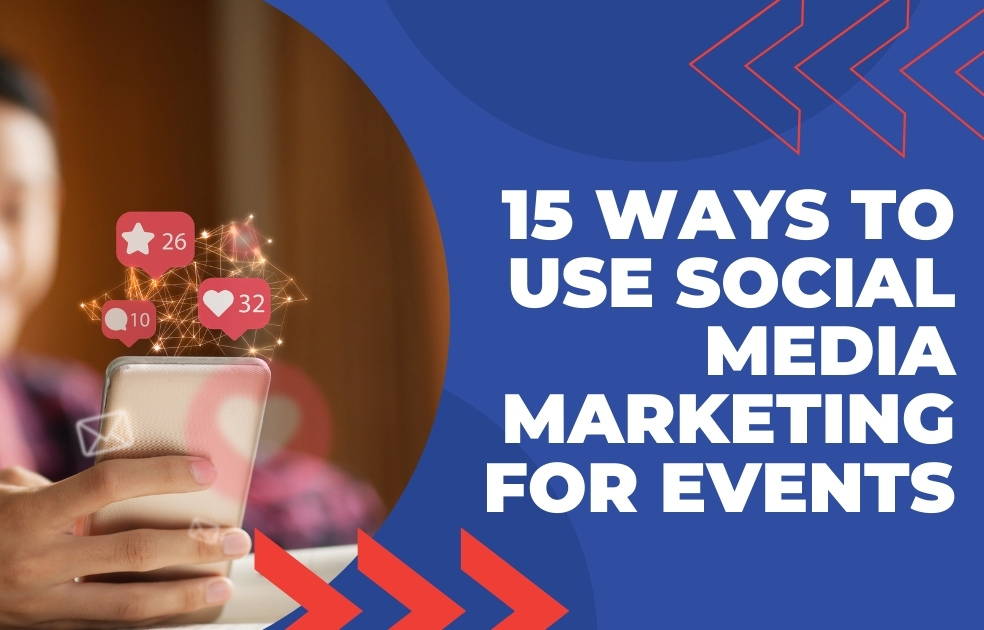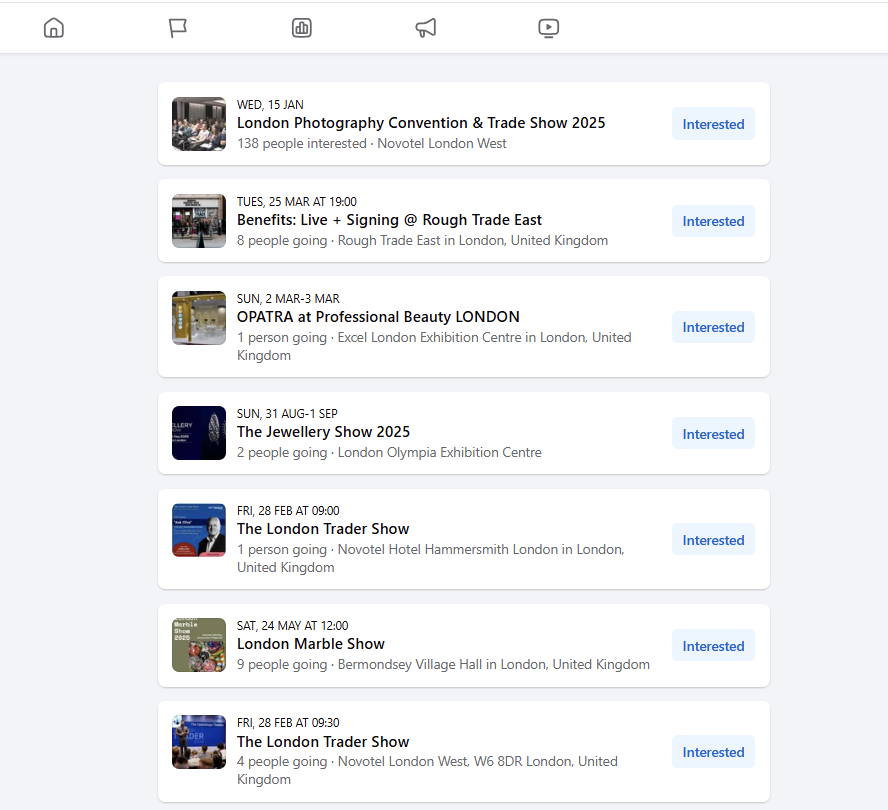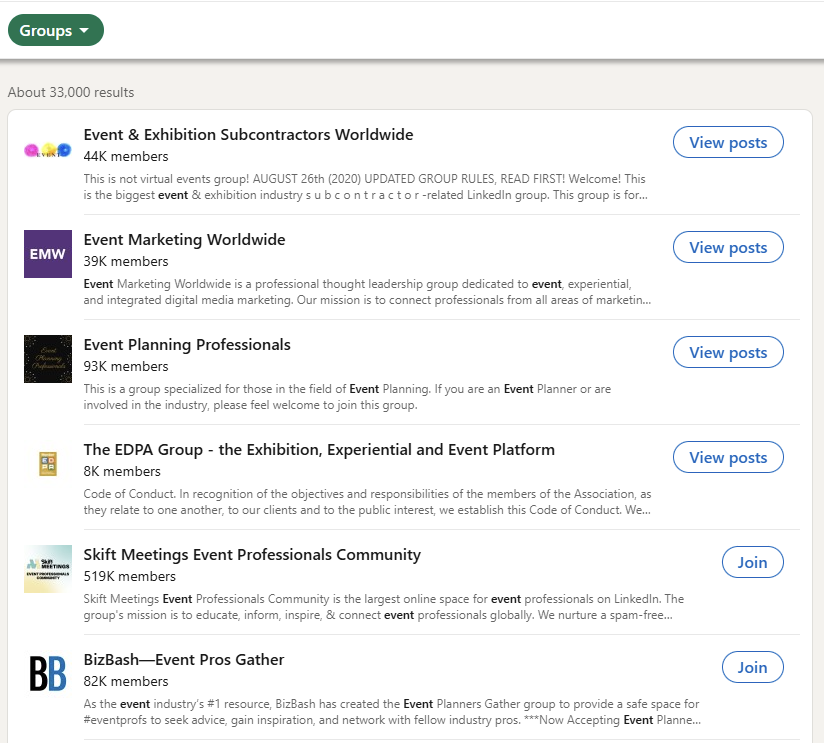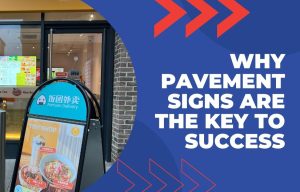
Ready to promote your event? Social media offers a multitude of ways to get the word out about your event to your intended audience. In this post, we’re going to explore 15 effective strategies you can use to leverage social media marketing and drive attendance to your event.
Facebook Event Promotion
Facebook remains the largest social network in the UK, making it an essential platform for event promotion. You can utilise both organic and paid methods to ensure your event gets the attention it deserves. Here’s how:
1. Regular Updates: Post about your event on your Facebook page consistently to keep your audience engaged and informed. Regular updates help maintain excitement and ensure your event stays top-of-mind. Encourage registrations by sharing compelling reasons to attend, such as exclusive product launches or networking opportunities.
2. Facebook Event Page: Create a dedicated Facebook event and invite your followers to attend. Here you can also encourage followers to invite their friends or others who may be interested. Keep the page active by posting updates, industry news, and fun trivia related to your event.
3. Facebook Group: Create a Facebook group for those of your audience who are attending the event. This allows everyone to network before, during, and after the event, fostering a sense of community and anticipation.
4. Facebook Ads: Use Facebook advertising to reach a broader audience beyond your current followers. Target specific audiences based on criteria such as job titles, industry, interests, and demographics. You can also create custom audiences from your website to retarget visitors and boost conversions.

Instagram Event Promotion
Instagram is the third most-used social platform as of December 2024. Its visual nature and growing focus on video content make it perfect for social media marketing and showcasing your event.
5. Instagram Stories: Use Instagram Stories to share countdowns, behind-the-scenes preparations, or highlights from past events. Showcase your exhibition furniture, banner stands, or any other displays. If you’re running competitions or giveaways, promote them here to attract more visitors and drum up excitement.
6. Regular Feed Posts: Post regular updates and reminders about your event on your Instagram feed. Consistency is key to keeping it top-of-mind for your audience. Share a mix of content, such as sneak peeks of your exhibition furniture, behind-the-scenes setup videos, or testimonials from past events. To maximise visibility, research and use relevant hashtags.
7. Instagram Ads: Leverage Instagram’s paid advertising options. Data shows that 50% of Instagram users become more interested in a brand after seeing an ad from them. This makes Instagram ads a great way to convert new customers and drive event attendance.
X (Formerly Twitter) Event Promotion
While X may not be as visual as other platforms, it’s excellent for real-time updates and engagement. Here’s how you can use it effectively:
8. Regular Tweets: Tweet about your event frequently. Vary your content by encouraging registrations, announcing new information, and sharing special promotions. This keeps your event visible in your followers’ feeds.
9. X Ads: Use X advertising to reach beyond your current followers. Target your ads based on keywords, demographics, and accounts your audience follows. Create a tailored audience from your website visitors and retarget them with ads to increase conversions.
LinkedIn Event Promotion
For B2B events or those targeting professionals, LinkedIn is an invaluable platform. Here’s how to make the most of it:
10. Company Page Posts: Regularly post about your event on your company page. Use a mix of content to encourage registrations such as multi-image posts, links to blog articles, and even videos. Similarly to Facebook and Instagram, here you should use relevant hashtags to increase visibility.
11. LinkedIn Publisher: Write a blog post about your event using LinkedIn Publisher. This notifies all your connections about your latest post, effectively spreading the word about your event and what you will be showcasing.
12. LinkedIn Group: Create a LinkedIn group specifically for event attendees. This is a great way to foster a sense of community and encourage networking before, during, and after the event. Share exclusive content in the group and encourage members to share what they’re looking forward to. This enhances the attendee experience and keeps your brand engaged with your audience long after the event ends.
13. LinkedIn Ads: Use LinkedIn advertising to reach a wider audience. Target your ads based on job titles, industry, interests, and skills to ensure they reach the most relevant professionals.

TikTok Event Promotion
TikTok’s short-form videos and viral trends make it a dynamic platform for event promotion, especially if your target audience includes younger demographics.
14. Viral Trends: Participate in viral trends or use a trending audio to create engaging content that promotes your event. TikTok thrives on trends, so keep an eye on what’s popular. For example, if a specific dance or challenge is trending, incorporate it into your event promotion. This approach not only boosts visibility but also makes your brand feel relatable and current.
15. TikTok Ads: Utilise TikTok’s high engagement rates by running ads. TikTok ads are highly effective because they blend seamlessly with user-generated content. Combine paid advertising with trending content to maximise your reach. This dual approach ensures your ads feel organic and drive conversions.
While this list provides a solid foundation for your event promotion, the possibilities with social media marketing are virtually limitless. To stand out, get creative and experiment with different platforms and strategies. By spreading your efforts across multiple platforms and leveraging the unique strengths of each, you’ll attract more attendees to the event. Additionally, this will create an enjoyable experience that encourages more followers and keeps viewers coming back.




